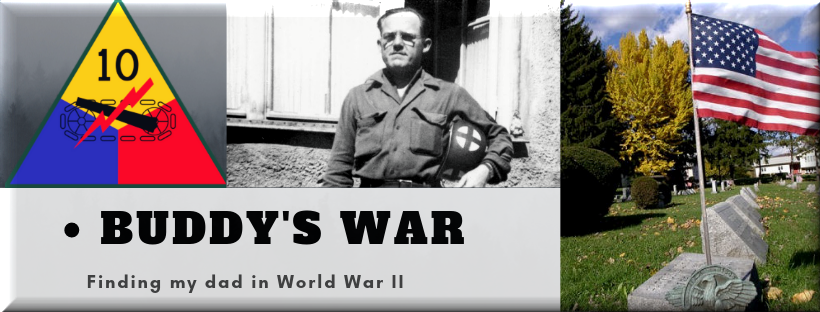◆ 25 September to 31 October 1944
The Battle of Metz stalled due to material and fuel shortage.
The battle for and around the ancient city of Metz began well before the 10th Armored entered the fray. The Third Army, under General George Patton had been activated in August in Normandy. Then, beginning in late July the swept across 400 miles of France in one month. It got to the Lorraine region where it met the German First Army intent on defending the line along the Moselle River. This began the Battle of Fortress Metz.
Here is a summary of the battle for Metz prior to the beginning of November. It is abridged and adapted from the Warfare History Network.
Metz before the 10th Arrived
The 12th Army group was running short on fuel. On September 25 12th Army Group commander Lt. Gen. Omar Bradley had ordered Patton to go on the defensive. That meant that Patton was unable to follow up his plan that might have allowed his troops to reach the West Wall before the onset of bad weather.
Patton was too impatient to sit idly by with German forces within striking distance and no amount of grumbling would help. At the end of September 1944 fuel wasn’t the only commodity in short supply for the Third Army. Patton’s men also lacked howitzer ammunition, rain gear, blankets, and sufficient rations. Morale dipped as a result, and Patton set about finding a way to keep his troops in the fight––regardless of the dismal supply situation.
[He] submitted to Bradley a plan …to continue limited offensive operations. “The whole plan was based … on maintaining the offensive spirit of the troops by attacking at various points whenever my means permitted it,” Patton wrote in his memoirs. In addition to keeping his various units in fighting trim, these limited attacks were meant to adjust the Army’s line in key places so as to give the units favorable departure points for resuming full-scale offensive operations once more fuel became available.
Meanwhile Supreme Commander of the Allied Expeditionary Force General Dwight D. Eisenhower and his staff envisioned a two-pronged offensive to capture the Ruhr and Saar industrial regions that fed the Third Reich’s belly. … First Army and Ninth Army would lead the primary attack against the larger Ruhr in the north, while in the south General George Patton’s Third Army would strike at the smaller Saar and therefore face Metz.
Metz was an ancient, 1500-year old fortress town on the Moselle River. It had been virtually indestructible over the previous millennium with defenses that had prevented any army from conquering the city since Atilla the Hun in 451 AD. The sprawling fortress system spread six miles west of the River and reached back another four miles to the east of the old city. Metz was therefore the most heavily fortified city in Europe at the time, consisting of 43 forts arrayed in an inner and outer belt that together mounted 128 heavy guns.
Bradley arranged for Patton to receive three fresh, untested divisions for the upcoming offensive… [One of these was] Maj. Gen. William Morris’s 10th Armored Division, which did not take up its place on Walker’s left flank until November 2. Patton waited as the battle went nowhere for a month and a half.
The fuel began arriving the first week of November. The only thing holding the Third Army back now was the inclement weather- neither the first nor last time that the weather would have an impact. Heavy rains transformed fields into quagmires, swept bridges off their moorings, and made existence miserable for GIs who lacked the most basic foul-weather gear. Shortages of galoshes and waterproof shoepacs caused an epidemic of trench foot.
It was in this stalled offensive that the 10th Armored Division would soon get its introduction to war.
◆ 75 Years Ago
◆ 25 October 1944
The 10th Armored Division and Buddy’s 80th Armored Medical Battalion were spending their last day on the Cotentin Peninsula. Tomorrow morning at 0405 they will start their move toward the war.

No comments:
Post a Comment